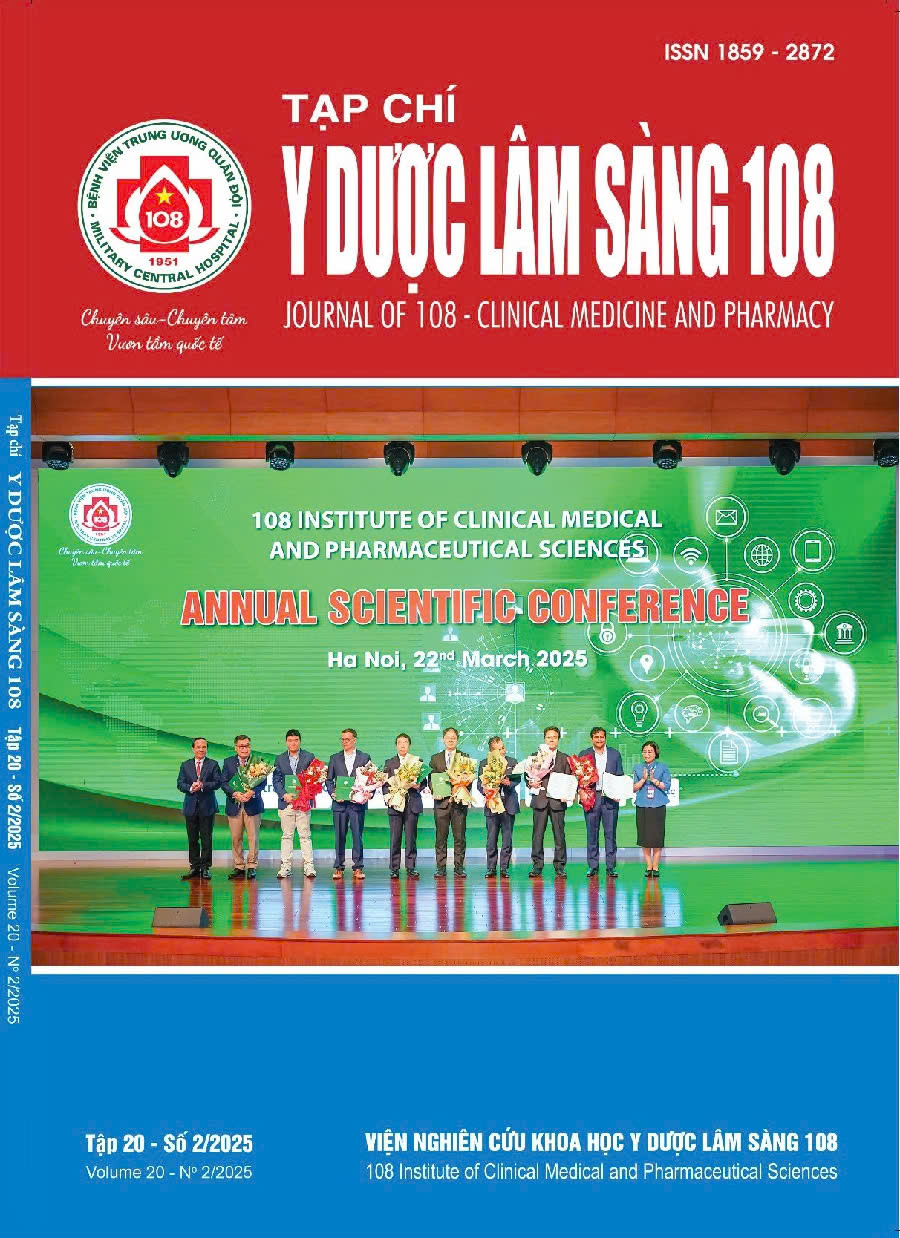Correlation between transcutaneous PCO2 (TcCO2) and PaCO2 in apneic ventilation patients with high‐flow oxygen during anesthesia for endoscopic vocal cord surgeryCorrelation between transcutaneous PCO2 (TcCO2) and PaCO2 in apneic ventilation patients with
Main Article Content
Keywords
Abstract
Objective: To analyze the correlation and similarity between transcutaneous PCO2 values (TcCO2) and PaCO2 in patients using high-flow oxygen during apnea endoscopic vocal cord surgery. Subject and method: A prospective study was performed on 122 patients aged 24 to 77 who underwent endoscopic vocal cord surgery from October 2022 to December 2024 at 108 Military Central Hospital. Patients received total anesthesia and neuromuscular blocking agents for the duration of their surgery and airway management using a high flow of oxygen under apnoeic conditions. Compare and analyze the correlation between TcCO2 and PaCO2 values in the above group of patients. Result: 122 patients were eligible to participate in the study, with an average age of 47.28 (12.34). Eight hundred fifty-four pairs of arterial blood gas samples and TcCO2 values were recorded. TcCO2 and PaCO2 values were well correlated (r = 0.955, p<0.001), the mean difference was 2.21mmHg, and the range of similar limit values was from -4.72 to +9.15mmHg (according to the Bland - Altman diagram). The difference between the indices PaCO2 and TcCO2 increased with the increasing of PaCO2. Conclusion: A strong positive correlation exists between TcCO2 and PaCO2 values in patients using high-flow oxygen during endoscopic vocal cord surgery.
Article Details
References
2. Beng Leong L, Wei Ming N, and Wei Feng L (2019) High flow nasal cannula oxygen versus noninvasive ventilation in adult acute respiratory failure: A systematic review of randomized-controlled trials. European Journal of Emergency Medicine 26(1): 9-18.
3. Flach S et al (2019) Transoral laser microsurgery using high‐flow nasal cannula oxygenation: Our experience of 21 cases. Clinical Otolaryngology 44(5): 871-874.
4. Hermez L et al (2019) A physiological study to determine the mechanism of carbon dioxide clearance during apnoea when using transnasal humidified rapid insufflation ventilatory exchange (THRIVE). Anaesthesia, 2019. 74(4): p. 441-449.
5. Gancel PE, Roupie E, Guittet L et al (2011) Accuracy of a transcutaneous carbon dioxide pressure monitoring device in emergency room patients with acute respiratory failure. Intensive Care Med 37(2): 348-351.
6. Storre JH, Magnet FS, Dreher M et al (2011) Transcutaneous monitoring as an replacement for arterial PCO2 monitoring during nocturnal non-invasive ventilation. Respiratory Medicine 105(1): 143-150.
7. McVicar J and Eager R (2009) Validation study of a transcutaneous carbon dioxide monitor in patients in the emergency department. Emergency Medicine Journal, 26(5), 344–346.
8. Rodriguez P, Lellouche F, Aboab J et al (2006) Transcutaneous arterial carbon dioxide pressure monitoring in critically ill adult patients. Intensive Care Med, 32(2), 309–312
 ISSN: 1859 - 2872
ISSN: 1859 - 2872
